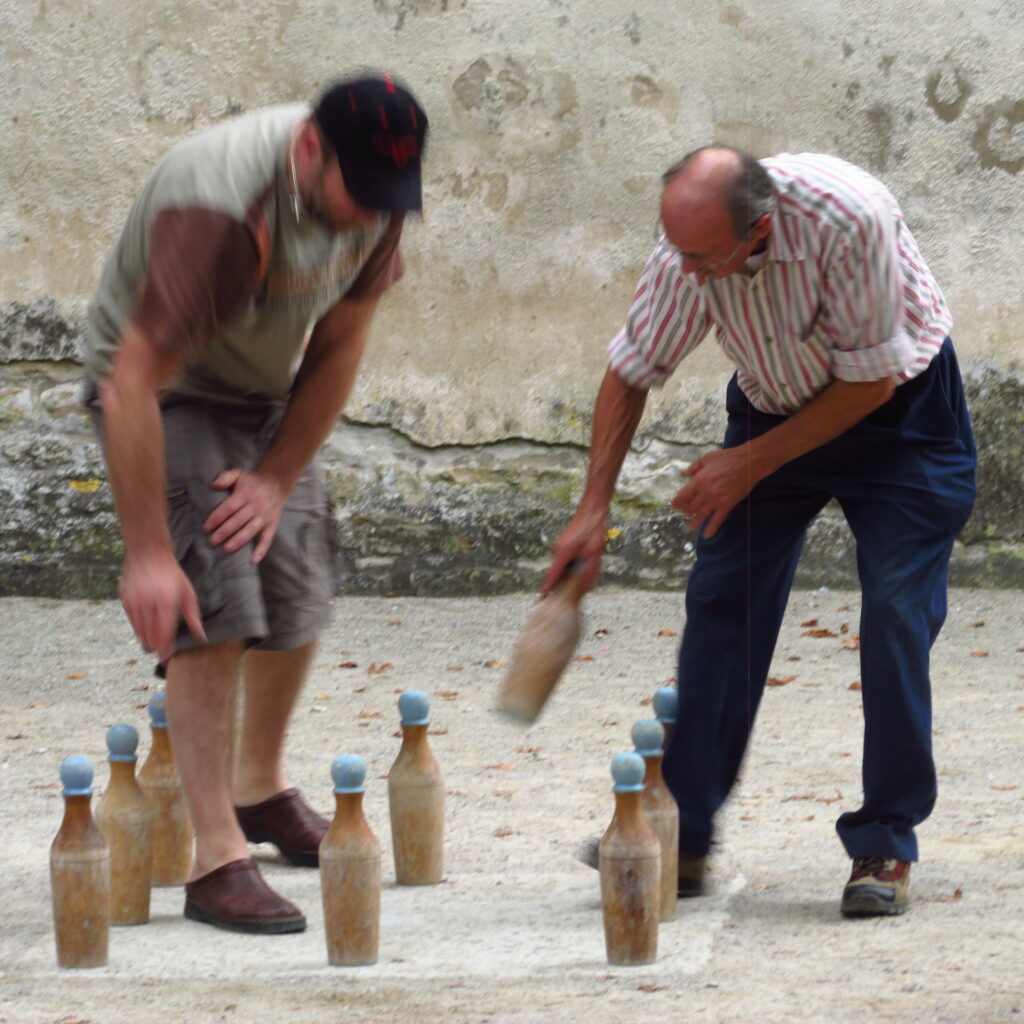Le jeu de quilles – “Skittles”
Skittles, ‘le jeu de quilles’, is an ancestral tradition that is an integral part of the cultural heritage of the Jura region in France. This popular game, which has spanned centuries, is still played today in many villages in the Jura, where it continues to bring people together during local festivals and friendly competitions.

Origins and History
The game of skittles dates back several centuries and has its origins in the throwing games played in Europe since the Middle Ages. In the Jura, this tradition has continued, often in a rural setting, where the skittles were handcrafted from local wood. Each village had its own skittle alley, generally located near the inn or the village square, and skittles games were a friendly time for the locals.
Rules of the Game
The principle of skittles is simple: it involves knocking down a certain number of skittles by throwing a wooden ball. The number of pins, their arrangement, and the precise rules can vary from one region to another, and even from one village to another. However, in the Jura, the most common configuration is that of nine pins arranged in a square, which players must knock down with a ball also made of wood.
The game can be played individually or in teams, and the games are often very competitive. Each player generally has two throws per turn to try to knock down as many pins as possible. The victory goes to the team that knocks down the most pins after a certain number of turns.
Equipment
The pins used in the Jura are traditionally made of solid wood, often beech or oak, local species that offer both strength and durability. The ball, also made of wood, is sometimes weighted with metal to increase its weight and the difficulty of the throw. The equipment, although rustic, is often neat, and the pins can be decorated with patterns or painted in local colors.
A Game of Conviviality
The game of ‘quilles’ in the Jura is much more than just a sporting activity; it is a real moment of conviviality. Quilles games often take place during village festivals, fairs, or family reunions. They are an opportunity for participants to meet up, chat, and share a moment of relaxation. Bowlers, whether novices or experienced, gather around the field to encourage the players, joke, and exchange tips.
Transmission and Preservation of Tradition
Today, ‘quilles’ remains a lively activity in the Jura, even if it is less practiced than in the past. Local associations have been formed to perpetuate this tradition and organize tournaments, thus maintaining interest in this traditional game. In addition, some villages have restored or preserved their old bowling grounds, which are now part of the local heritage.
Annual events, such as bowling festivals, are organized to bring together bowlers of all ages and allow them to share their passion. These events contribute to the transmission of this playful know-how to younger generations, thus ensuring the continuity of this traditional practice.
The game of bowling in the Jura is a precious witness to the popular traditions of the region. Beyond simple entertainment, it embodies values of sharing, conviviality and respect for traditions. By perpetuating this game, the inhabitants of the Jura keep alive a part of their history and cultural identity, making the game of bowling an essential element of the Jura heritage.
